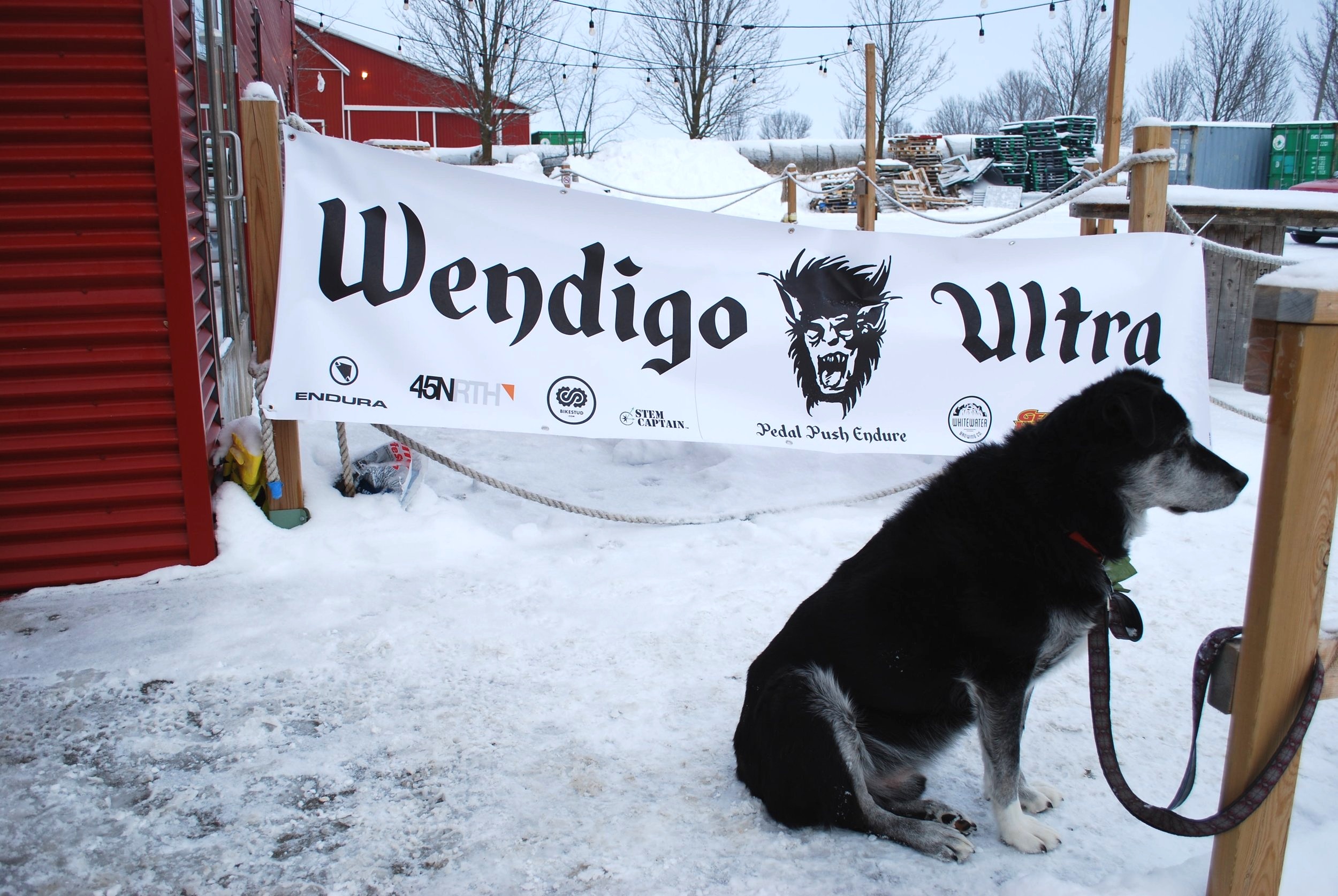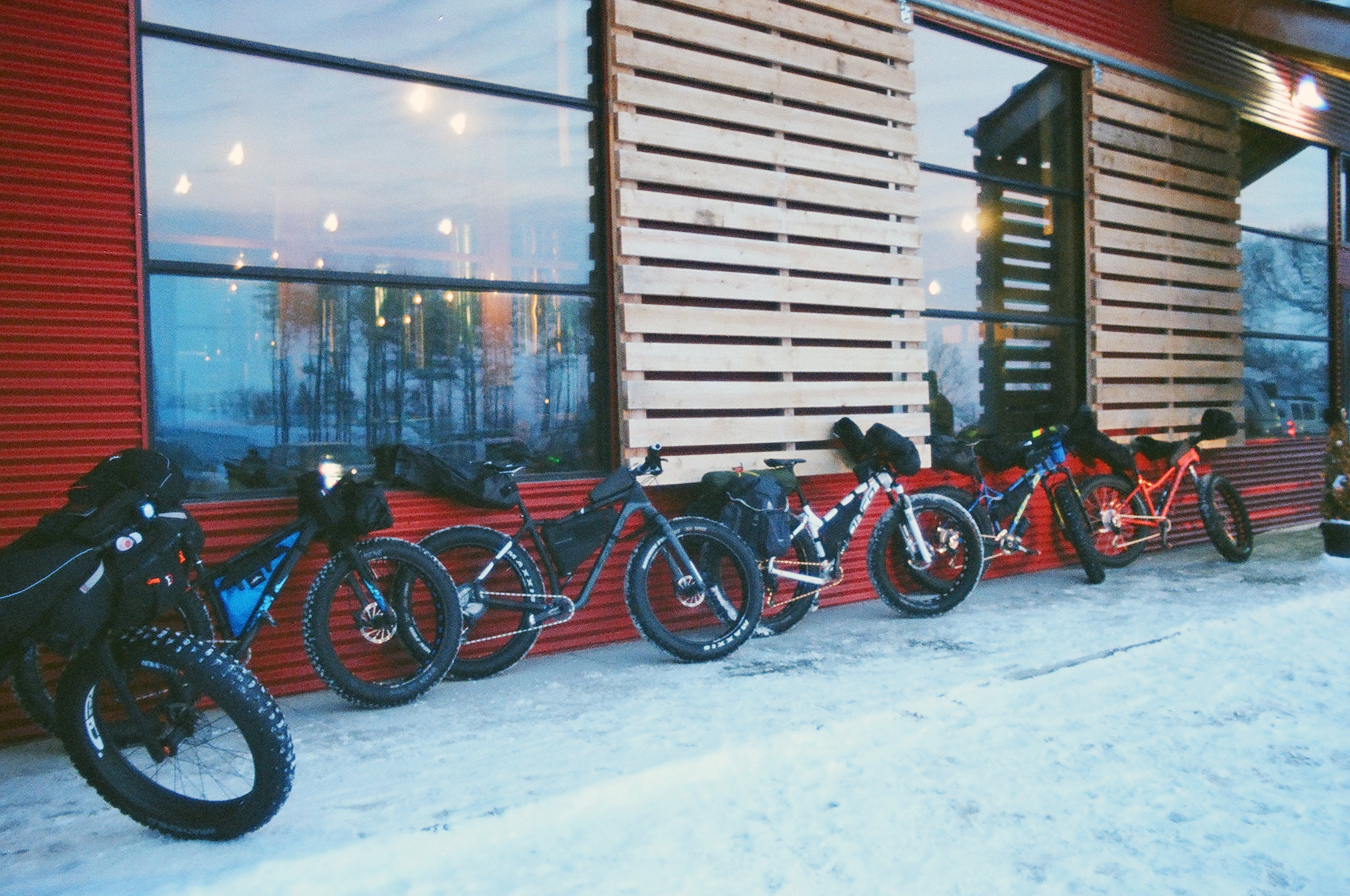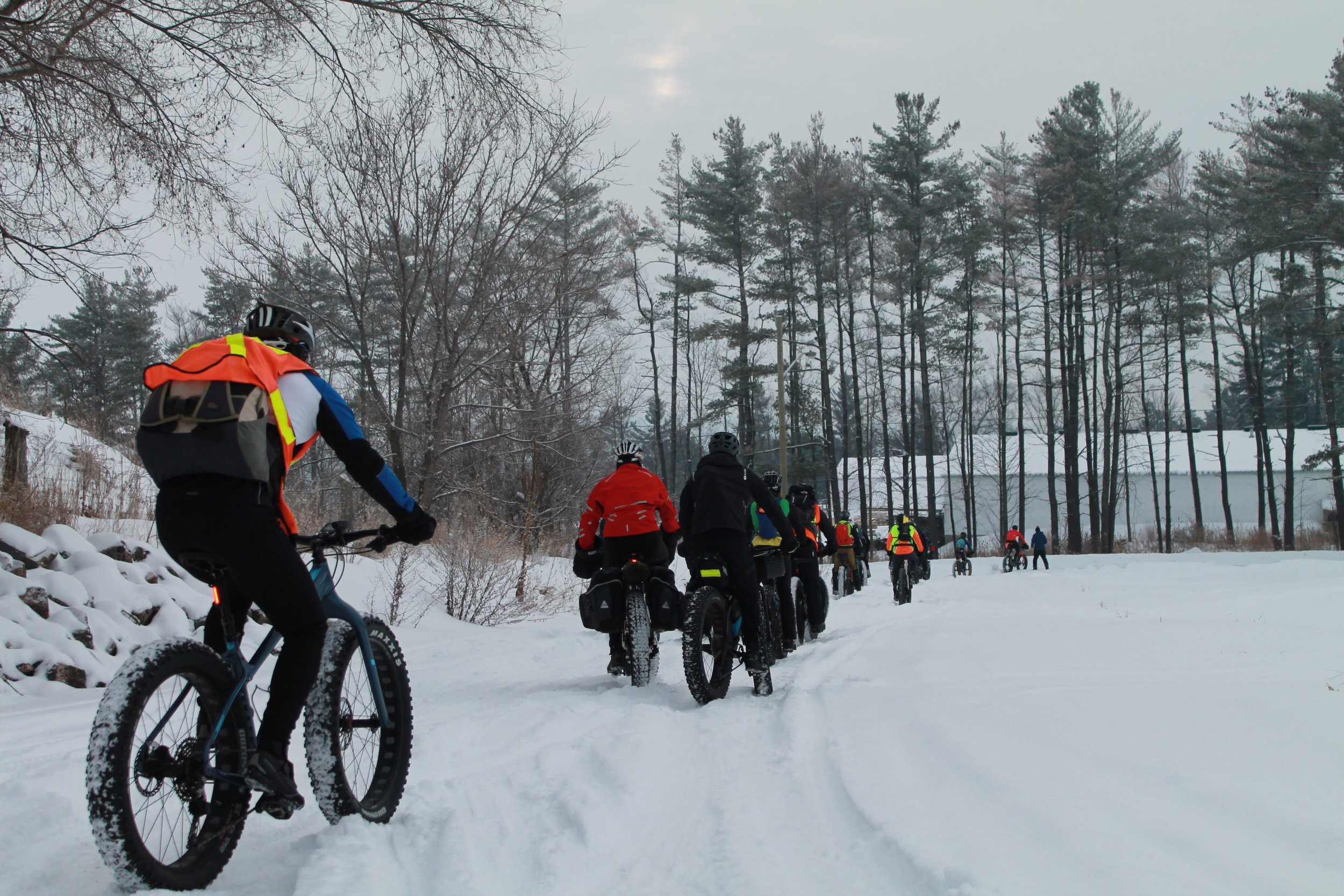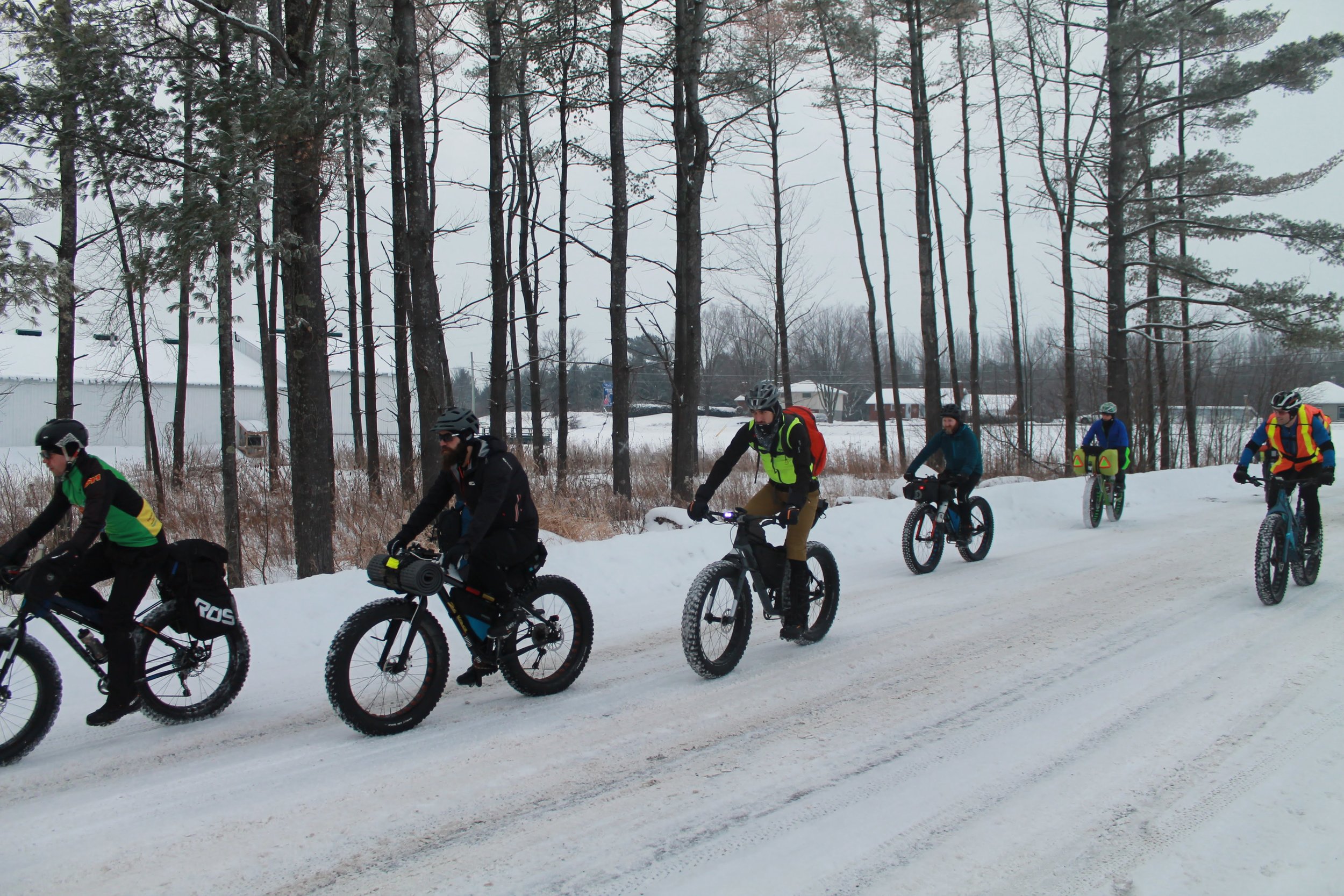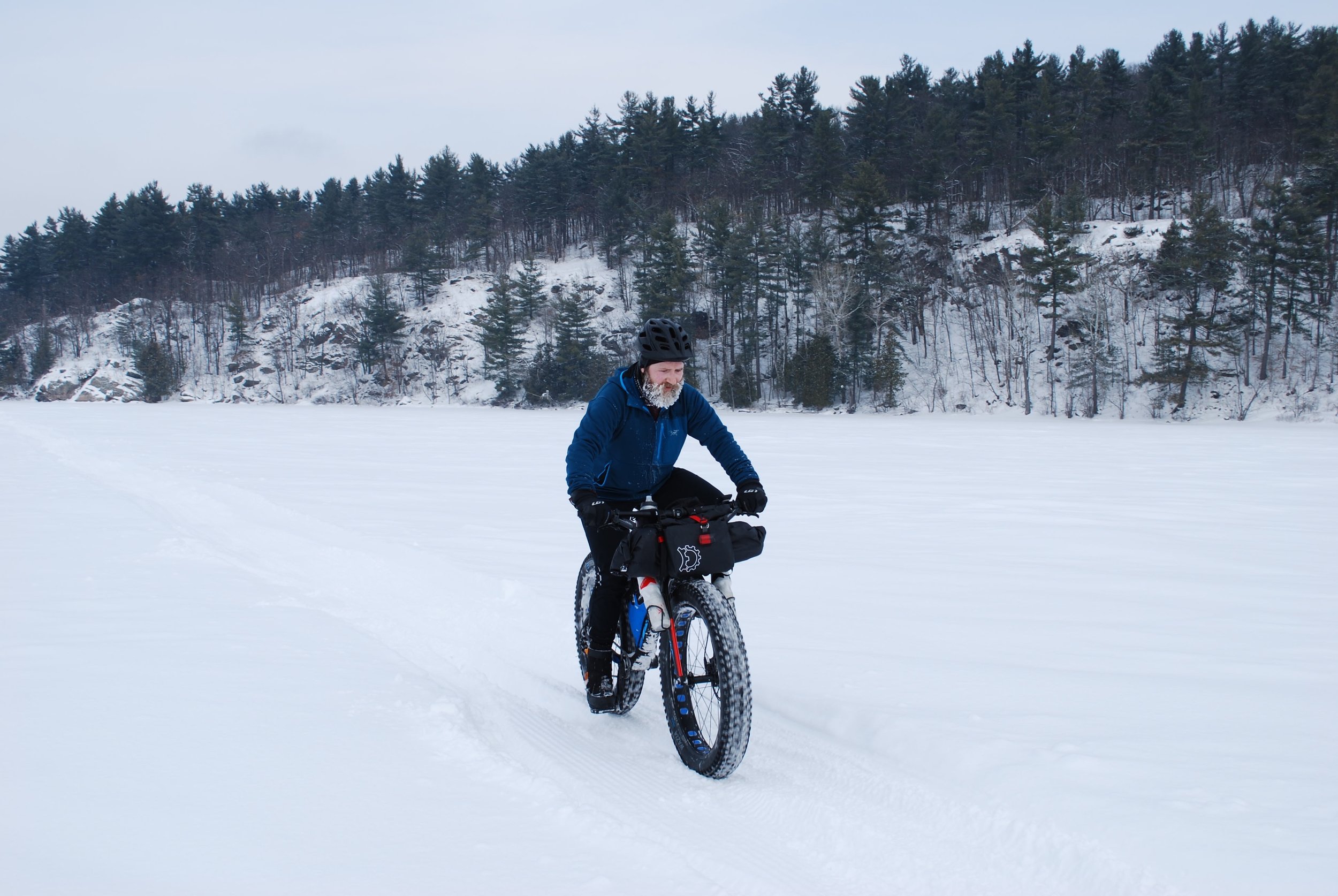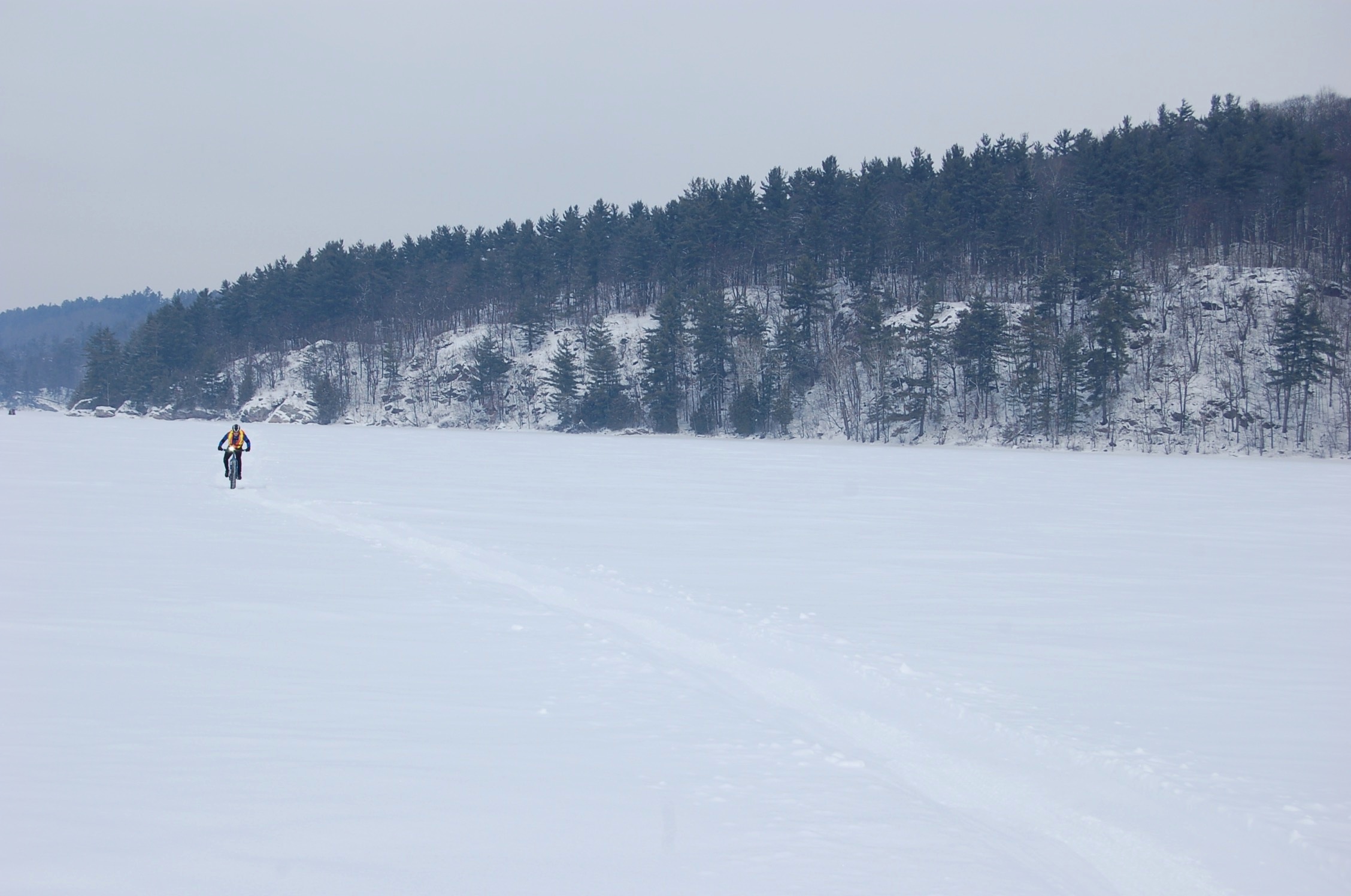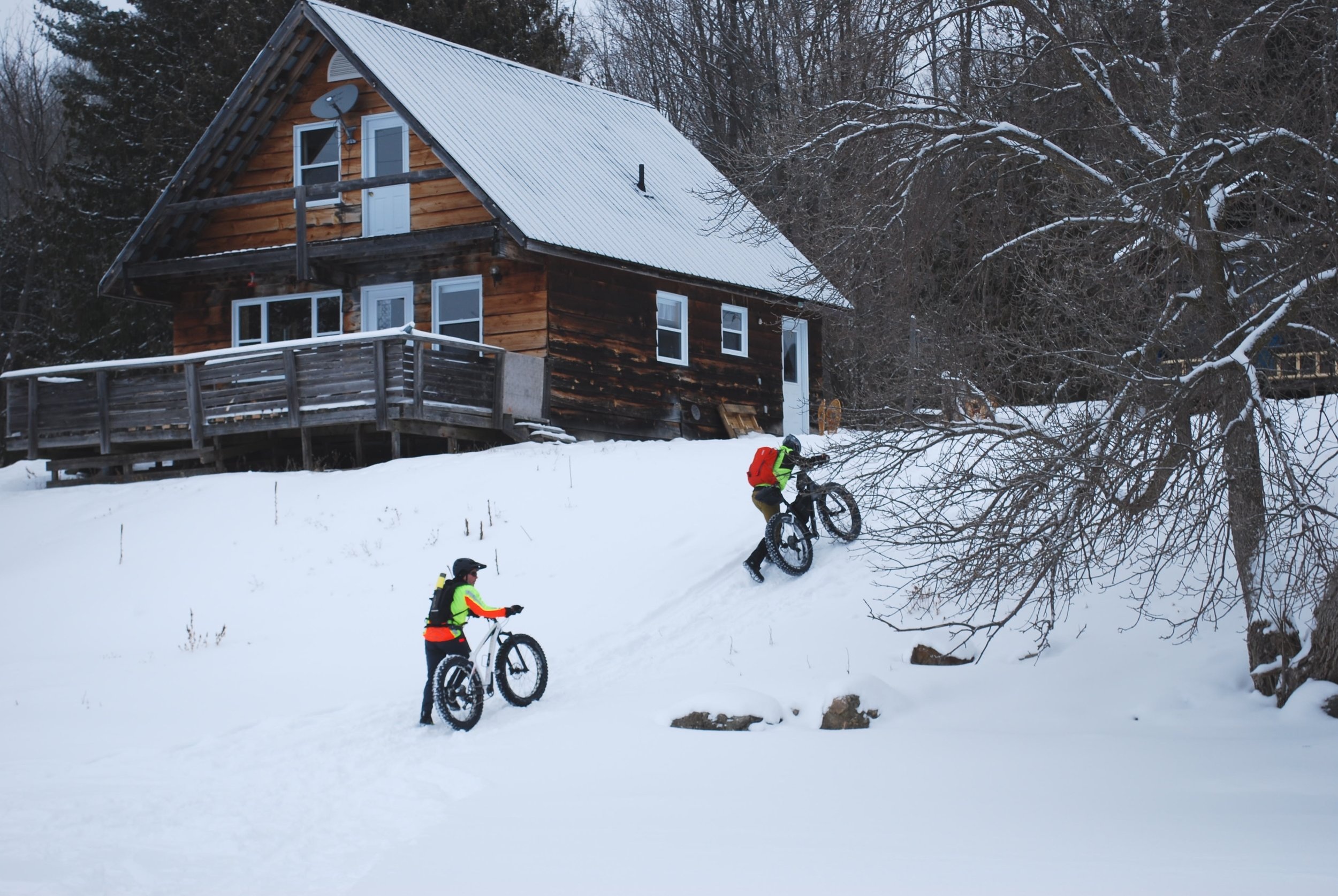The Wendigo Ultra
By Loïc Olivier
Photos courtesy of: Loïc Olivier and Paul Harding
have you ever dreamt of doing an ultra endurance fatbike race? Loïc did. He decided to stop dreaming and headed out on one wild ride and learned a lot in the process.
Part 1 – In the beginning
Ultra-races have always fascinated me, especially those that take place in winter. In a long-distance race, the weather will turn for the worse at some point. During an ultra-endurance race, you're sure to face some obstacles.
When winter comes, I have a tendency to read and reread some of the wild stories coming out of the Iditarod Trail Invitational in Alaska, and the Arrowhead in Minnesota. Trail conditions are often difficult. Epic hike-a-bikes are the norm. When night comes, temps often drop to -40C. Riders are pushing themselves for dozens of hours, fighting the urge to quit while being beaten down by strong northwestern winds. Mid-race DNFs are common.
We’re spoiled in the Canadian National Capital Region. Each year, Cameron Dube organizes the Wendigo Fatbike Ultra, a winter ultra-endurance fatbike race that runs through Eastern Ontario and Western Quebec over distances of 50km, 100km, and 150km.
In January 2018, I decided to go for it. I signed up for my first ever endurance race: The Wendigo Fatbike Ultra 50km.
Part 2 - Preparation
A few weeks before the race, I revved up and increased the number of my bike outings: big Gatineau Park rides, short rides on sweet Pontiac dirt roads, urban marathon rides crisscrossing snow-covered bike paths on both sides of the Ottawa River. All in all, including bike commutes, I managed to ride outside for a solid ten hours a week.
All Wendigo Ultra participants must have the mandatory basic equipment. Race volunteers check each participant's equipment and if something is missing or not working, you get disqualified.
For the 50km race, I needed:
1️. 8 square inches of reflective material on the front and back of bike or cyclist. I stuck 3M red reflective strips on the fork and chainstays of the Chic-Chocs.
2️. Flashing lights (minimum 3 bulbs) at the front and rear blinking at all times, day and night. White or red lights at the front, red lights at the back. I used two simple red flashing lights.
3️. 2 litres of water in insulated bottles. I get thirsty when I ride, so I brought 3 litres in Big Chill insulated bottles. I keep 2 bottles on the fork of my Chic-Chocs, and the other bottle will go in a feed bag on my stem.
4️. Insulated foam pad, a minimum size of 12X12". I’ll bring a small Z Seat from Therm-a-Rest.
5️. Bivy bag or emergency blanket that can fend off the wind/cold. I brought a reflective emergency blanket.
In addition to the mandatory equipment, I had brought a change of clothes (two merino base layer tops, a puffy coat, two neck warmers, a pair of gloves, a hat and a balaclava), food for about 8 hours of high-intensity riding (gels, Cliff bars, homemade GORP) tools, an inner tube, pump, cell phone, ID cards, money and a 35mm camera.
My goal was to finish the 50km race in less than 4 hours.
Part 3 - The race
Saturday was race day. I woke up at 4 am and had a solid breakfast. I drank a long espresso, chased it with another one, and took care of last-minute prep. I was getting picked up around 5 am so I could get to Beachburg before 7 am.
When we arrived at the Whitewater Brewery, volunteers were waiting outside to verify our equipment. An hour later, Cameron Dube, the race organizer, gives us race instructions. At 8 am, everyone moved towards the starting line. Riders started washing out left and right, their tire pressures were too high. Almost everyone lowered their pressure before the big start.
We’re all standing there, saying nothing. All we hear is the wind.
Mass start at 8:25 am. Two groups form very quickly, the first one is made up of roadies in full kit. The fast group sprints at full speed before lining up on Muskrat Lake, where passing is more difficult. I wouldn’t see them again for the rest of the race.
The other group is more diverse and impossible to typecast. The group quickly picks up a cruising pace. I passed a few riders, but it wasn’t eqsy. The first group left tire ruts on the groomed trail. People were running high tire pressures. I had to stay in the middle of the trail to not end up crashing head over heels.
At the other end of the lake, 6km further, we arrive at the Olsens' house. The Olsens are out on the balcony, egging us on. Sounds like the next kilometer will be a trek.
What an understatement.
The road from the Olsen cottage to the concession road is steep and not cleared. There are snow angels everywhere. I’m sweating my life away and go out of bounds a bunch of times.
I finally get out of this hellish driveway and hit the concession road. The wind started to pick up a little. The road was quiet. I rode in peace but had to be mindful of traffic crossing the provincial roads.
I was in the zone. I wasn’t riding especially fast but doing well above 14km/h on a snow-covered trail. At this rate, I was sure I’d finish the course well below my 4-hour goal.
Part 4 – To the finish
I had finally reached Beachburg. There was a quick check-in at the arena. I was drenched in sweat but I was doing good on time, so I decided to leave without changing.
I had been riding at a steady pace for two and a half hours. I was thirsty and getting ready to take a sip, but my bottle was almost empty. I grabbed a bottle from the Chic-Chocs’ fork, but the bottle was frozen shut. I stopped in the middle of the road, unscrewed the lid and poured the ice water into my empty bottle. With my glove removed, I thought I might as well eat some food. My protein bar was as hard as a rock. I took out a gel. It was so thick I couldn’t swallow it without gagging. I had to eat something, or I'd hit the wall. Argh.
Back on the lake, things continue to go south. I could barely ride 20 meters without crashing. I fell down dozens of times. My vision was getting blurry. I was getting really tired. I had to deflate my tires more, but I was afraid I would go too slow. By then, poor judgment was my de facto modus operandi. I continued that nonsense along the entire length of Muskrat Lake. Riding for more 6km took me an hour.
When I arrived at the shore, I got off the bike and pushed it up the hill. I saw the Whitewater Brewery about a km away.
Damn, I was so thirsty...
Part 5 – Post Scriptum
All things considered, my first ultra-endurance race went pretty well, but the last quarter of the race was particularly difficult. I made a number of mistakes:
1️. Too lightly prepared. To do well in an endurance race, you have to test your equipment and your food and adjust as necessary. A shakedown would ensure a more successful ride.
2️. Frozen water bottles. Next time, I would start with hot water in all my bottles. I would also make sure to wrap them in a cozy. ***PLEASE NOTE - new Wendigo Ultra rule for 2019: insulated bottles are only allowed if wrapped in closed cell foam insulation or a cozy with full bottle coverage.
3️. Hard to eat food. I have to try and find something other than protein bars that harden and gels that thicken. I also have to use pogies instead of thick gloves. That way I’ll be able to put on thin gloves and won't need to take off my gloves to eat. Pogies will also allow me to keep my food warm in the cold.
4️. Too much stuff. Of course, I didn't need to bring a camera. Next time, my phone will do the trick. For spare clothes, I’ll have to sort everything out on the spot before starting the race and leave some items aside depending on the weather.
5️. Batteries. For the 50km event, my lights worked properly because I used new lithium batteries. If I ever decide to sign-up for the 100km or 150km event, I would bring spare lithium batteries. If the lights stop working at a checkpoint, I could be disqualified.
6. Tire pressure. I always check my tire pressure by hand, but experience has shown me that I should really test it with a pressure gauge so that I can find the pressures that work for me. If I slip and slide all over, it's because the pressure is too high. There’s no magic here, I just have to stop and lower it as needed.
Here's the Links:
Loïc on instagram: @roches_et_racines
Check out Loïc’s Chic Chocs fatbike from Panorama Cycles
Panorama Cycles on instagram: @panoramacycles





